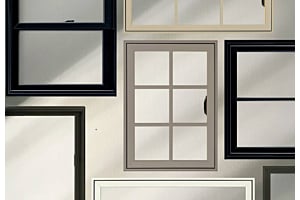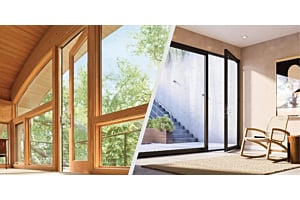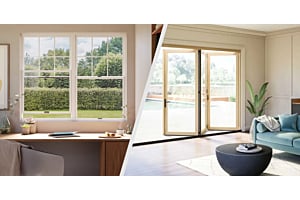Double vs. Triple Pane Windows: How to Choose Correctly
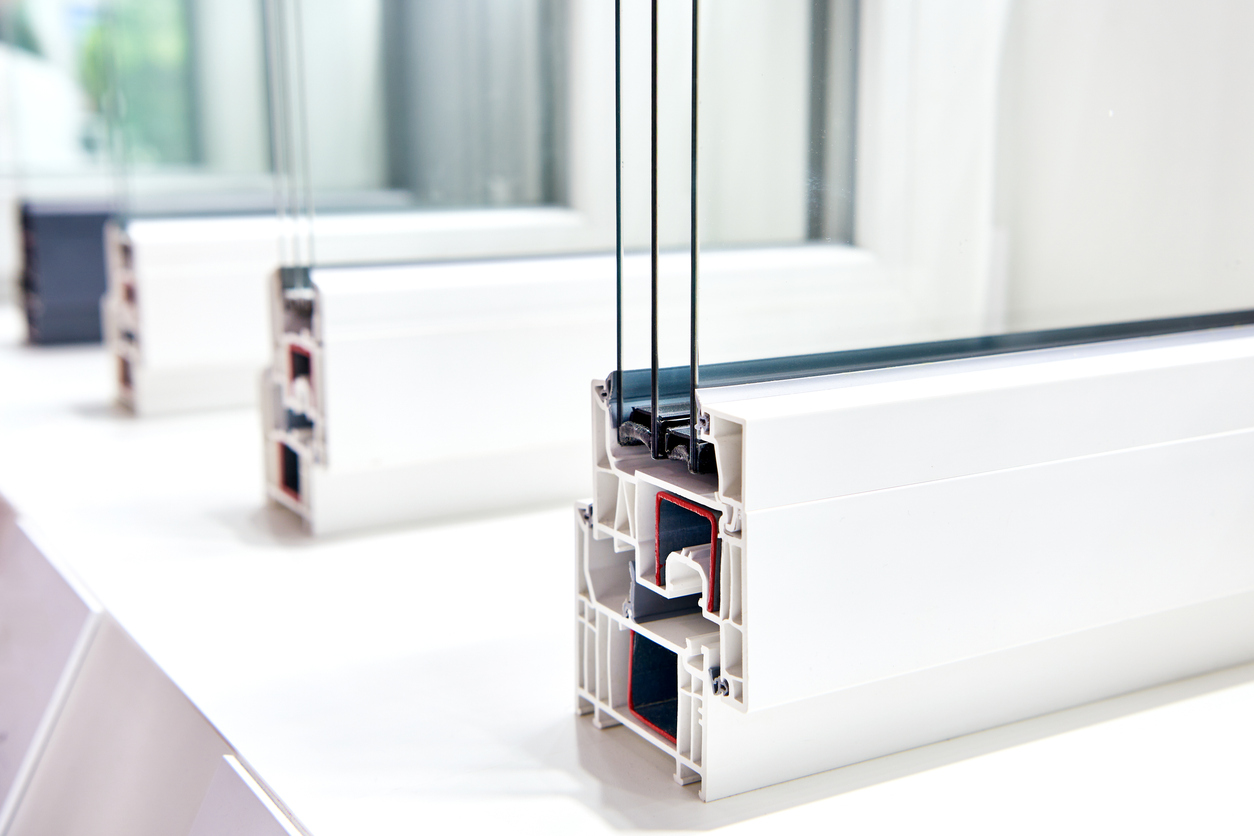
When it comes to choosing new windows, the choice between double-pane and triple-pane windows can seem like an easy decision—after all, wouldn’t three panes of glass always be better than two? The reality, however, isn’t so cut and dry. Depending on where you live and your specific needs, each type of window offers its own set of advantages and considerations.
To help you make the best decision, let’s explore the differences, benefits, and key factors that should influence your choice.
Double-Pane Windows and Triple-Pane Windows: Key Differences Explained
The most obvious difference between these two window types lies in their construction. Double-pane windows consist of two sheets of glass with a spacer between them, which is filled with insulating air or gas. This design helps provide a good balance of insulation, noise reduction, and energy efficiency.
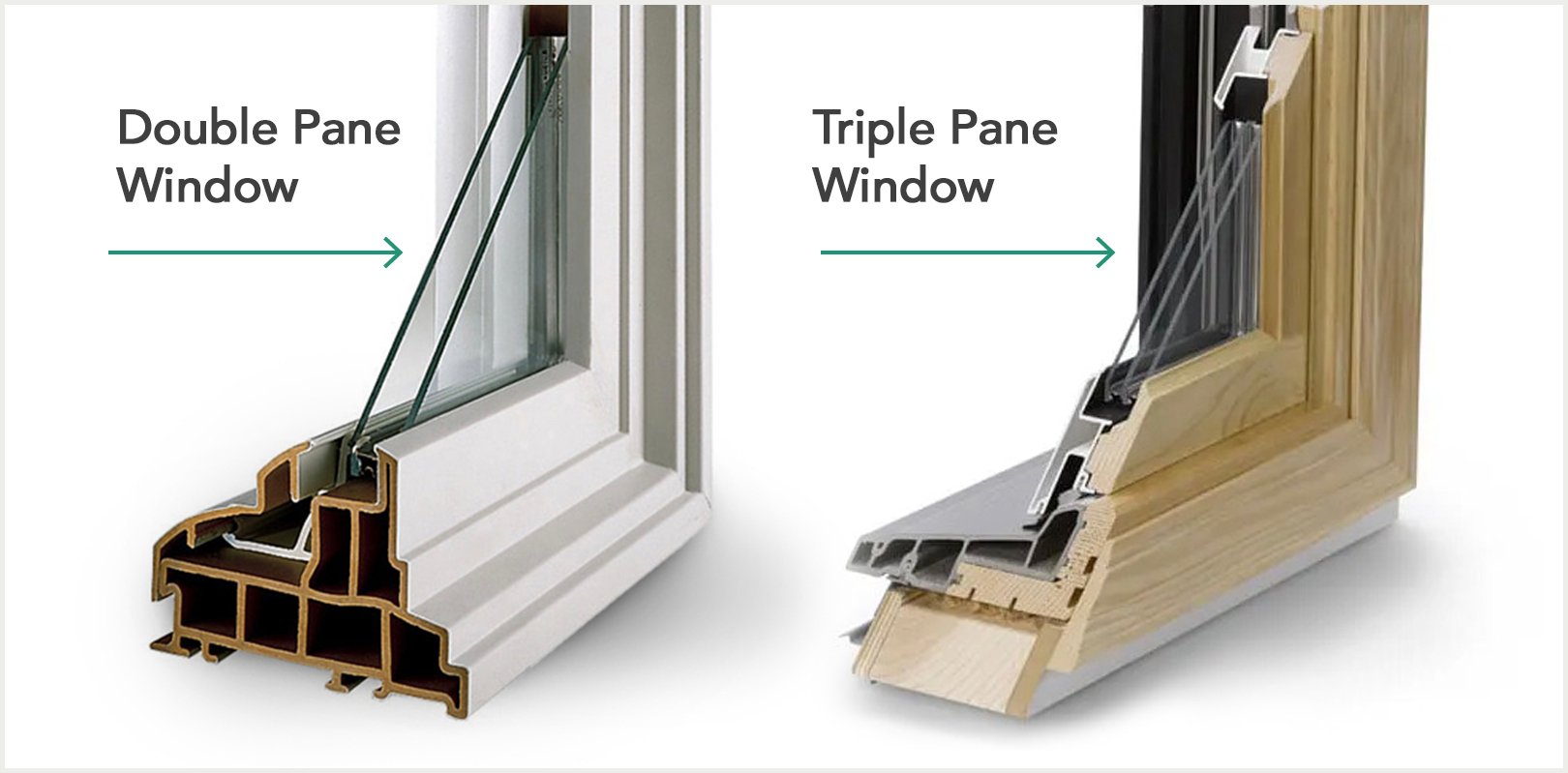
Triple-pane windows, also referred to as “triple-glazed windows”, have three sheets of glass with two insulating layers in between. This additional pane of glass provides several advantages but also introduces new considerations in terms of cost and installation complexity. Let’s take a closer look at these factors and how double vs triple-pane windows stack up.
1. Noise Reduction Differences
One of the key benefits of triple-pane glass windows is enhanced noise reduction. The additional glass layer and the two insulating air spaces between the panes help to block out external noise more effectively than double-pane windows. This feature can be particularly useful if you live near a busy street, in a noisy neighborhood, or in an urban environment.
However, if your home is in a relatively quiet area, double-pane windows often provide sufficient noise insulation without the added cost of a third pane.
2. Energy Efficiency and Climate Impact
The extra layer of glass and two insulating air spaces mean triple-pane windows have better insulation. Their design helps keep warm air inside during the winter and hot air out during the summer. Multiple Low-E (low-emissivity) coatings can also be applied to improve energy efficiency based on your climate. For homeowners in colder climates, the improved insulation provided by triple-pane windows can translate into energy savings and a lower energy bill.
On the other hand, if you live in a moderate or warm climate, double-pane windows with the right Low-E coatings will generally suffice in keeping your home comfortable while keeping energy costs lower.
Pro Tip: The A-Series by Andersen Windows has a wide range of energy-efficient windows for homes in cold climates. Every window style in the A-Series can be ordered with triple-pane glass.
How does the additional gas in triple-pane windows impact energy efficiency?
Triple-pane windows improve energy efficiency by using two gas-filled layers, typically filled with argon or krypton, which are denser than air and have lower thermal conductivity. This design reduces heat transfer through the window, helping maintain indoor temperatures. These gas layers, combined with Low-E coatings, create an effective thermal barrier that lowers heat loss in winter and minimizes heat gain in summer, leading to improved energy savings for homeowners.
3. Frame Construction and Installation Requirements
The extra pane of glass in triple-pane windows means these units are heavier and thicker than their double-pane counterparts. This increased weight often requires a sturdier frame, which may raise the overall cost of the window. Additionally, the heavier design can complicate installation, making it more labor-intensive and potentially more expensive.
Whether you are choosing double or triple-pane options for new construction or as replacement windows, both types are available in virtually all popular styles, including casement, double-hung, sliding, picture, and bay windows. This means you can typically match your desired architectural style regardless of whether you are replacing old windows or installing new ones.
The main difference lies in frame options—some manufacturers may limit certain decorative frame profiles or grid patterns in triple-pane windows due to the additional weight and thickness requirements. However, most common aesthetic choices, including frame colors, internal grids, and exterior trim options, are available in both types.
4. Cost Difference
Triple-pane windows can cost 20-30% more than double-pane windows due to their additional glass layer, insulating gas, and stronger frame requirements. While double-pane windows offer a budget-friendly option with strong performance for most homes, triple-pane windows can justify their premium through energy savings in more severe climates.
From a real estate perspective, both window types enhance home value. Triple-pane windows are particularly attractive in cold-climate regions where energy efficiency is a top priority for buyers. Beyond the immediate value increase, new energy-efficient windows can accelerate your home's sale by assuring potential buyers they won't face window replacement costs soon after purchasing their home.
| Metric/Feature | Double-Pane Windows | Triple-Pane Windows |
| Number of Panes | 2 | 3 |
| Insulating Gas | Argon or Krypton | Argon or Krypton |
| U-Factor Range | 0.27 - 0.30 (with Low-E coating) | 0.15 - 0.24 (with multiple Low-E coatings) |
| SHGC Range | 0.25 - 0.42 (varies with Low-E coating) | 0.18 - 0.35 (varies with Low-E coatings) |
| Noise Reduction | Moderate noise reduction | Superior noise reduction, especially with laminated glass |
| Visible Light Transmittance (VLT) | 60% - 73% depending on coating | 50% - 66% depending on coating |
| Cost | Standard pricing ($ $) | 20-30% more expensive ($ $ $ - $ $ $ $) |
| Weight & Frame | Lighter; suitable for most frame options | Heavier; requires stronger frames and limited decorative profiles |
| Best for Climates | Moderate to warm | Cold climates or areas with high noise pollution |
Which Type of Window Should I Choose?
Choose Double-Pane Windows if:
- You live in a moderate or warm climate: Double-pane windows provide sufficient insulation to maintain comfort without overheating your home. They are designed to limit heat transfer, helping to keep cooling costs manageable in regions with milder temperatures.
- You live in a low-noise environment: Double-pane windows offer reasonable noise reduction for quieter areas. They are generally sufficient in reducing common external noises, such as distant traffic or neighborhood sounds, making them ideal for suburban homes or rural settings.
- You are budget conscious: Double-pane windows deliver the best balance of cost, performance, and energy efficiency. On average, they can be 20-30% less expensive than triple-pane options, which can free up budget for other home improvements or upgrades.
- You want more natural light: Double-pane windows typically allow about 1-2% more natural light transmission compared to triple-pane windows since each glass layer absorbs and reflects a small amount of light. While this difference is minimal, it might be noticeable in rooms where maximum natural light is crucial, such as living rooms or kitchens.
Choose Triple-Pane Windows if:
- You live in a very cold environment: The added insulation of triple-pane windows helps keep warmth inside and reduces heating costs. This can lead to significant savings on energy bills in climates with long, harsh winters where maintaining indoor temperatures is a challenge. Learn more about energy efficiency in R-value vs. U-value: Key Differences Explained.
- You live in a noisy area: Triple-pane windows offer enhanced noise reduction, particularly when combined with laminated glass. These windows are effective at blocking outside noise, making them ideal for homes near busy streets, airports, or urban areas with high levels of traffic or other noise pollution. To learn more about noise reduction
- You’re prepared to invest more in the windows and installation: Triple-pane windows cost more than double-pane windows due to the additional glass, frame requirements, and installation complexity. However, the investment can pay off in terms of long-term energy savings and a quieter, more comfortable home environment, making triple-pane windows worth the additional cost in certain cases.
- You’re looking for a longer lifespan: Triple-pane windows, due to their additional layers and more robust construction, often have a longer lifespan and can provide lasting benefits in terms of insulation and durability, especially in harsh climates. Their enhanced build quality also makes them more resistant to seal failure, which can prolong their effective life.
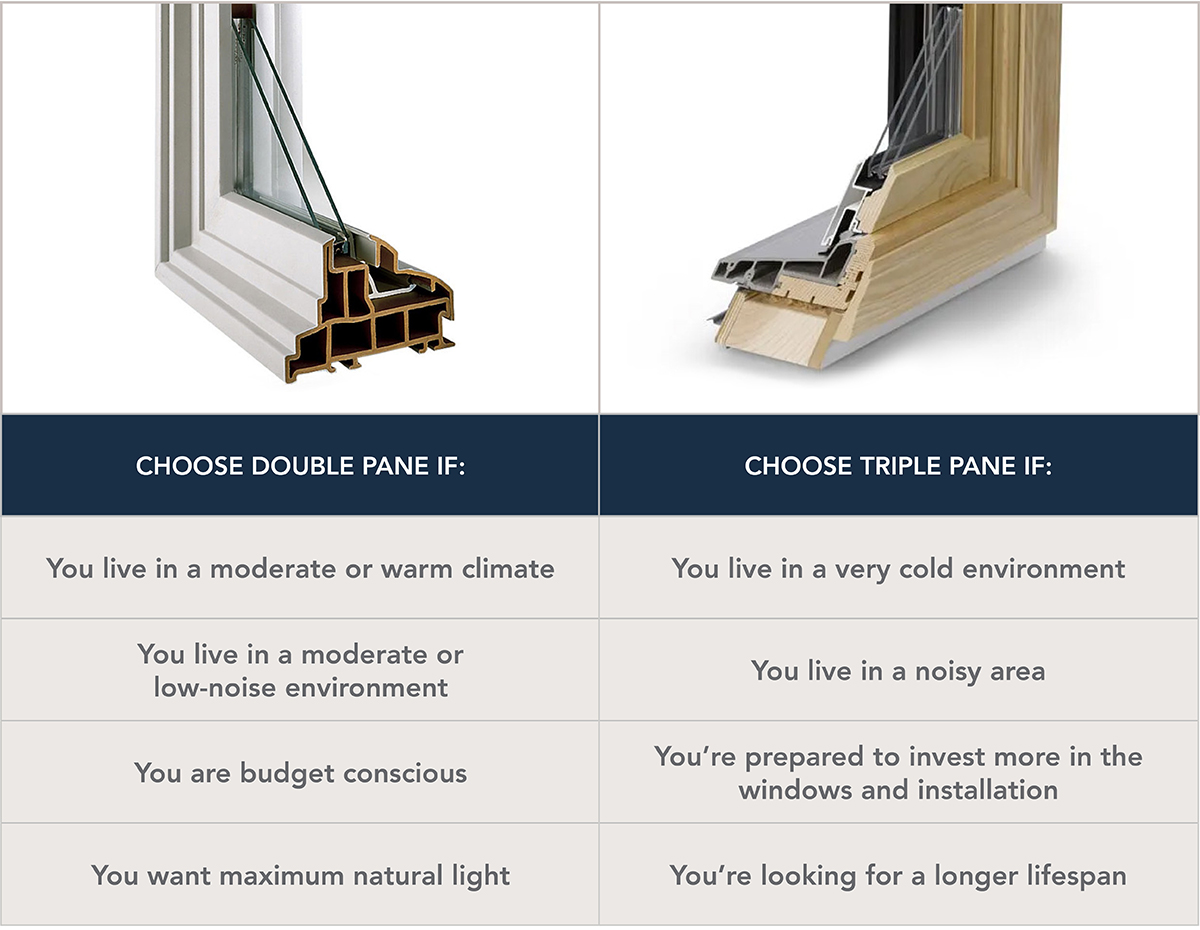
When deciding between double and triple-pane windows, there isn’t a one-size-fits-all answer. While both are superior to single-pane windows, each type has its strengths and is best suited to specific situations. Double-pane windows offer a balanced option for most homes, providing adequate insulation, noise reduction, and energy efficiency at a reasonable cost. Triple-pane windows, while more expensive, offer superior insulation and soundproofing benefits, making them ideal for cold climates and noisy environments.
Find Energy-Efficient Windows at Ring’s End
As a window supplier and installer in the Northeast, the window team at Ring’s End knows the importance of installing the right window configuration for harsh winters and hot summers. We find that Andersen Windows and Doors offer our customers a wide range of quality options to accommodate all types of project needs, and we’re proud to be an authorized Andersen dealer. Visit one of our eight showrooms to experience windows of all kinds for yourself and talk with our window specialists in person.

